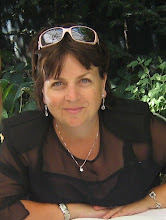Enough talk, time for our next Friday Tip for Greener Life:
Eco Driving Will Save You Fuel and Money
Even if the price of fuel drops
 a little, filling up your tank with gas can be a wallet-emptying experience. On top of the money spent on gas, the amount of pollutants and CO2 released by your car adds to the green guilt. With that in mind, we introduce you the term eco-driving, which will minimize the impact of your car on the environment, and save money at the same time. Get ready for 10 easy steps that will make a big difference to your budged and will help the environment.
a little, filling up your tank with gas can be a wallet-emptying experience. On top of the money spent on gas, the amount of pollutants and CO2 released by your car adds to the green guilt. With that in mind, we introduce you the term eco-driving, which will minimize the impact of your car on the environment, and save money at the same time. Get ready for 10 easy steps that will make a big difference to your budged and will help the environment.1. Limit yourself: The song says, "I can't drive 55", but you really ought to. For every five miles per hour you drive above 55 mph, you lose 10% fuel efficiency, so keep your speed down when you can.
2. Go steady: Many traffic lights are timed for efficient traffic flow, and by maintaining a constant speed, you'll hit more green lights in a row.
3. Get the lead out: Do you take off from stoplights like you're drag racing, then hit the brakes at the next one? Accelerating less aggressively and slowing down moderately for stops can increase your fuel efficiency by over 30%.
4. Go steady: Many traffic lights are timed for efficient traffic flow, and by maintaining a constant speed, you'll hit more green lights in a row.
5. Go for a cruise: Use your cruise control on the highway to maintain a steady speed and keep yourself from accelerating unnecessarily. An average fuel savings of 10% is possible by just cruising. For mountainous drives, skip the cruise control and accelerate smoothly on the hills, coasting down the other side with minimal fuel.
6. There's an app for that: Got an iPhone? Install a fuel saving application like MyMPG that lets you know when you're wasting gas.
7. Streamline your ride: Improving the aerodynamics of your car reduces drag and improves fuel efficiency. Got a roof rack full of gear? Leave it at home and feel the difference.
8. Hack your fuel efficiency: Change your plugs regularly, keep your engine tuned up, and your filters clean. Empty your car of any extra items you've been hauling around for years to lighten your load.
9. Jump in the pool: Drive alone, and you're making the gasoline industry very happy. Find a carpool for work commutes, and ask your friends and neighbors to combine errand runs with you.
10. Gear up: Cars are more fuel efficient in a higher gear, so when you're up to speed, pick the gear with the lowest engine rpm and you'll burn the least amount of gas, while reducing the emissions from your tailpipe.
Via: Planet Green


















